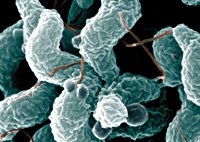The Food Standards Agency used laboratory reports, along with other factors, to estimate what level of decline in human cases could be achieved through our work to reduce campylobacter in chickens. Based on that modelling, we estimate that there are 100,0003 fewer human cases of campylobacter overall. This meets our aim4, agreed by our Board, to reduce the number of people getting ill from the food poisoning bug by this amount. Achieving this reduction is estimated to lead to a direct saving to the economy of over £13 million in terms of fewer days off work and NHS costs.
Levels of campylobacter ;in chicken continue to decline, as demonstrated in the first set of results from our third year survey of campylobacter on fresh shop-bought whole chickens, published today.
The results for the first five months of our third retail survey, from August to December 2016, show:
- Overall, 7% of chickens tested positive for campylobacter within the highest band of contamination6
- Among the nine retailers with the highest market share, 5% of chickens tested positive for campylobacter within the highest band of contamination
The results show a decrease in the number of birds with the highest level of contamination compared to the same months in 2015 and 2014. The new data show 7% of chickens tested positive for the highest level of contamination, down from 12% for the same period in 2015 and 20% in 2014. Research has shown that reducing the proportion of birds in this category will have the biggest positive impact on public health.


